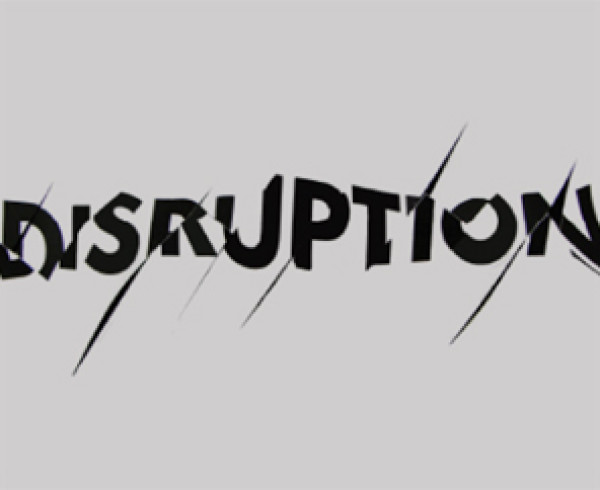Original Source: http://bit.ly/20J0jvv
Author: Heidi Roizen, Operating Partner at DFJ
There are storm clouds gathering over Silicon Valley – and it’s more than just El Nino.
As a venture capitalist, I see a lot of data points within the private company marketplace. Every Monday, I sit in a room with my partners and we discuss dozens of companies, both portfolio companies as well as those we are considering for investment. When a market turns, we tend to see the signs earlier than the entrepreneurs working on the front lines.
This market? I’d say it has turned.
It is going to be hard (or impossible) for many of today’s startups to raise funds. And I think it will get worse before it gets better. But, hey, my entrepreneurial friend, who ever said it was going to be easy? One of my favorite expressions is: “that which does not kill us makes us stronger.”
So which is it going to be for you? Tougher? Or dead.
Fortunately, (unfortunately?) I’ve been to this movie before, during the dot-com “nuclear winter” – anyone remember that? I’d like to think I’ve learned some things from that painful experience.
I’ve seen companies live, and I’ve seen them die. And I’ve concluded that certain behaviors separate the two.
Which behaviors, you ask? Here are a few from my downturn playbook for how to stay alive.
Stop clinging to your (or anyone else’s) valuation: You know what somebody else’s fundraise metrics are to you? Irrelevant. You know what your own last round post was? Irrelevant. Yes, I know, not legally, because of those pesky rights and preferences. But emotionally, trust me, it is irrelevant now. We even have a name for this – valuation nostalgia. Yes, it was great when companies could raise those amounts, at those prices,blah, blah, blah, but the cheap-money-for-no-dilution thing is largely over now. The sooner you get on with dealing with that, and not clinging to the past, the better off you will be. As my DFJ partner Josh Stein says, “flat is the new up.”
Redefine what success looks like: I had lunch last week with a friend of mine who broke her leg in three places four months ago. “I used to think a successful weekend was 10+ miles of running,” she said. “For now, success is going to have to mean making it to the mailbox and back without my crutches.” When a market like this turns, in order to survive, it is critical to redefine what success is going to look like for you – and your employees, and your investors, and your other stakeholders. Holding on to ‘old’ ideas about IPO dates, large exits and massive new up rounds can ultimately be demotivating to your team. If you can make it through the downturn, you will have those opportunities again. But for now, reset your goals.
Get to cash-flow positive on the capital you already have (AKA, survive): My DFJ partner Emily Melton said this in our last partner meeting: “Must be present to win.” I used to say it at T/Maker (the company for which I was CEO) in a slightly different way: “In order to have a bright long-term future, we need to have a series of survivable short term futures.” You need to survive in order to ultimately win.
You know what kind of companies generally survive? Companies that make more money than they spend. I know, duh, right? If you make more than you spend, you get to stay alive for a long time. If you don’t, you have to get money from someone else to keep going. And, as I just said, that’s going to be way harder now. I’m embarrassed writing this because it is so flipping simple, yet it is amazing to me how many entrepreneurs are still talking about their plans to the next round. What if there is no next round? Don’t you still want to survive?
Yes, some companies are ‘moon shots’ (DFJ has a fair number of those in our portfolio) where this is simply not possible. But for the vast majority of startups, this should be possible.
So, for those of you in the latter group, I want you to sharpen your spreadsheet, right now, and see if, by any hugely painful series of actions, you could actually be a company that makes money. ASAP. Or at least before you run out of money. Because that’s the only way I know to control your own destiny. You don’t have to act on it (although I would), but at least you will know if you have a choice.
And if you absolutely, positively, cannot get there without more capital? Then you needto…
Understand whether your current investors are going to get you there: Guess who else cares about whether you live or die? Yep, your current investors. Another duh. That’s why they are your best source of ‘get me to cash flow positive’ financing. And yet, even though we all know this, why is it we don’t actually (1) create the plan that gets us to cash flow positive ASAP, and then (2) go to our backers and get their commitment that they will see us through (or know that they won’t, because if they won’t, the sooner we know that, the sooner we can go out and do something about this.) I know many VCs hate to be put on the spot about this, but I think entrepreneurs have the right to ask, and to know.
Stop worrying about morale: Yes, you heard me right. I can’t tell you how many board meetings I’ve been in where the CEO is anguished over the impacts on morale that cost cutting or layoffs will bring about.
You know what hurts morale even more than cost- cutting and layoffs? Going out of business.
I was at a conference once where someone asked Billy Beane how he created great morale at the A’s. His answer? “I win. When we win, morale is good. When we lose, morale is bad.”
Your employees are smart. They know we are in uncertain times. They see the stress on your face. They worry about their jobs. What do they want to see most? A decisive plan for survival, that’s what – even if some of them have to go. Trust me, a clear plan is a real morale turn-on.
Cut more than you think is needed: Yes, this is simple, but not easy. It is so easy to justify why you want to lay off fewer people. However, when you do, by and large, you’ll be laying even more off later. Why we humans seem to prefer death by a thousand cuts is a mystery to me. Don’t. It’s easier on everyone if you cut deeper and then give people clarity about the stability of the remaining bunch.
Scrub your revenues: Last week an entrepreneur pitched us, and his ‘current customers’ slide was alight with bright, trendy logos of bright, trendy venture-backed companies. You know what I saw? A slide full of bright, trendy, money-losing, may-not-survive companies. (Luckily, in this case, the entrepreneur referenced these customers because he thought VCs would like to see that their smart startups use his stuff, but he actually had a lot of mainstream customers too. He has a new slide now.) This, I think, was one of the biggest surprises from the last dot-com bust – we all knew we had to cut our expenses, but no one thought about what our customers might be doing. And guess what? They were all cutting costs too – including those costs which comprised our revenues. Or worse, they were going out of business. If you are in Silicon Valley and your customers are mostly well-paid consumers with no free time, or other venture-backed startups, well, I’d be worried. And yes, it sucks, but it is better to be worried than surprised.
Focus maniacally on your metrics: I know a few CEOs who delegate the understanding of their financials and their business metrics to the CFO, and then stop worrying about all that ‘numbers stuff’. Don’t do that. You have to know your numbers inside and out – they are your life blood. You also have to know which metrics drive the business, and focus on them like your survival depends on it – because it does. Figure out your canary (or canaries) in the coal mine (by that I mean the leading indicators that tell where your business is headed and whether it is healthy) and watch them weekly, or daily, or in real time, whatever is possible. And, have a plan in advance about what you will do if/when the metrics go south. Many of the best companies to have survived the last downturn became super data-driven, and were constantly course-correcting to make small but continuous improvements in their operations with what they learned.
Hunker down: These markets generally take a long time to recover. Longer than you think. And, it might get worse. So don’t plan for the sun to start shining tomorrow. Or next month. Or next quarter. Or maybe even next year. Sorry.
Having just thoroughly depressed you, let me say that I’ve seen amazing transformations by companies who adapt early to the new reality. Severe budgets give clarity. Smaller teams often find greater purpose in their work. Gaining control (by becoming profitable) feels really, really good. Watching your competition (who didn’t read this) die, feels – can I say it? – well let’s just say that when your competition goes out of business, you often gain their customers…and that’s a very, very good thing.
Some of the greatest companies were forged in the worst of times. May you be one of them.







